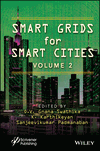Smart Cities and Buildings
Summary
To manage developing general population, hyper-urbanization, and globalization, and to guarantee monetary and ecological security, urban communities are becoming smart urban areas. As a general rule, smart city alludes to the idea of using innovation and connected information sensors to improve the framework of city life and activities. This strategy is utilized to screen and oversee public resources, transportation frameworks, residents, power plants, water supplies, data frameworks, municipal bodies, and other local area administrations. To transform urban communities into smart urban communities, smart city connected innovation and Internet of Things (IoT) arrangements are fundamental. Building a smart city involves utilizing IoT and associated innovation works on the quality, execution, and intuitiveness of metropolitan administrations while additionally streamlining assets and bringing down costs. The worldwide market for a smart metropolitan framework in smart urban communities incorporates progressed connected streets, smart traffic management, smart lighting, and other smart innovation. To ensure building well-being and security, resource preservation, and general natural health, smart structures utilize a wide scope of frameworks. To save energy, smart matrices and meters can be utilized in the structure with the aid of the IoT and connected technologies. The implementation of a smart city offers huge prospects to improve people's lives and a city's overall infrastructure and operations.



